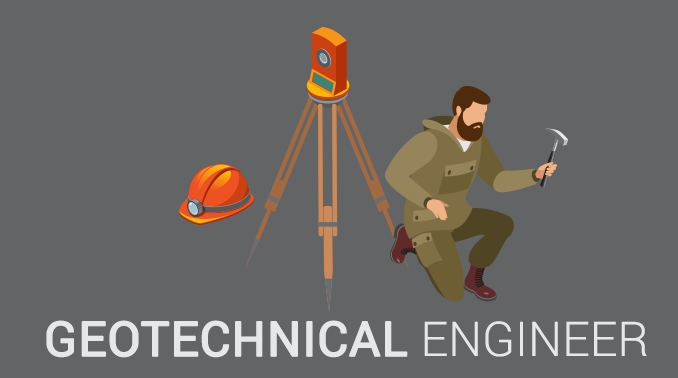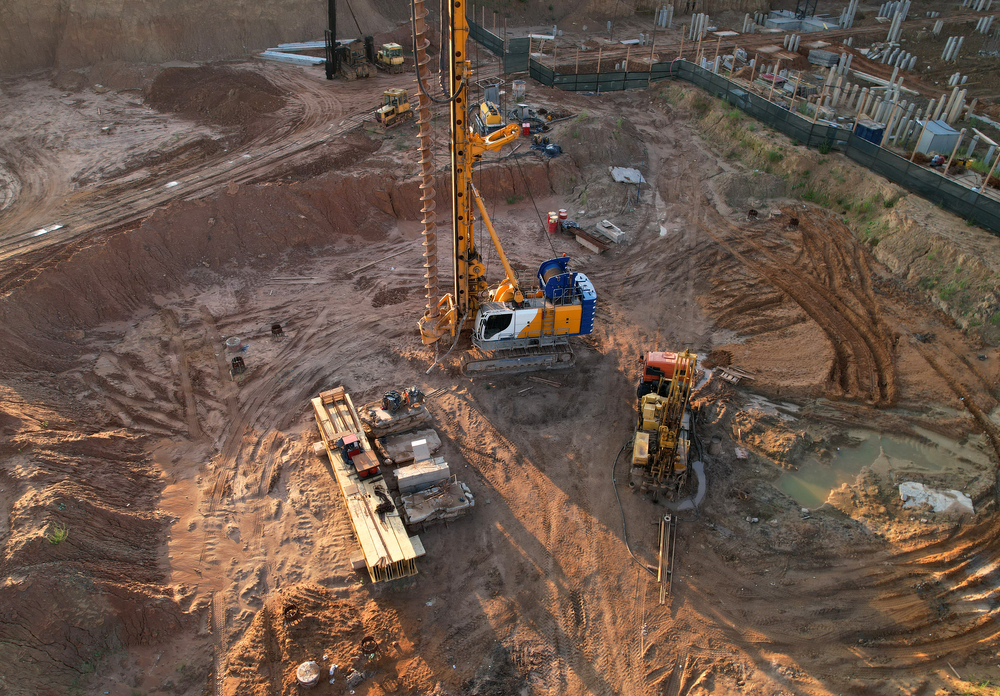Geotheta Can Be Fun For Anyone
Table of Contents7 Simple Techniques For GeothetaGeotheta for DummiesRumored Buzz on GeothetaRumored Buzz on Geotheta
They team up with civil designers, architectural engineers, architects, and various other specialists to integrate geotechnical considerations into the general job style and construction procedure. This requires effective synergy, sychronisation, and interaction to ensure that the geotechnical aspects straighten with the job goals and meet regulative demands.Mining & Products Design: Principles of drilling, penetration rates, and variables impacting the choice of drilling technique. Blasting techniques in surface and below ground workings. Mechanical and continual methods to fragmentation, including longwall shearing and fullface boring.
Modelling of piece and particle dimension distributions; comminution as a transfer function. Comminution modern technology: crushing, grinding, size classification. Integrated evaluation of fragmentation and comminution procedures. Provided by: Mining & Materials Engineering.
The Best Strategy To Use For Geotheta
Bachelor's degree programs in civil, geotechnical, geological, and ecological design normally last four years and consist of general education courses in English, social science, and the humanities, in addition to training courses in sophisticated mathematics, architectural geology, and liquid mineralogy. (https://disqus.com/by/geotheta/about/)
Geotechnical design involves the analysis of the dirt and rock conditions at a particular website, and their ramifications for the advancement of that site. As many structures depend on the ground for assistance, it is without surprise that a thorough understanding of the ground conditions, and the suitability of foundation systems, are important to the long-term stability and performance of the structure or framework.
Being experts in the examination of geological formations and ground behaviour, geotechnical designers do scientific examinations and testing to understand the impact these geological developments may have on the design and construction of building, civil and framework projects. This experience is crucial for the layout and building of structures, roadways, passages, dams, bridges, and water supply and sewer system.
The geotechnical team at Douglas Partners consistently seek advice from engineers, design designers, developers, and building contractors to make referrals on style and growth proposals to ensure that the constructed structures are appropriately created for the ground conditions. The style of footing systems needs to think about the weight of the framework, the capacity of the ground to sustain that weight together with movement resistances and effective building and construction.
A Biased View of Geotheta
This task is substantially simplified by the usage of our Douglas Map geospatial system that makes this details readily obtainable in a simple to make use of internet browser user interface. A geotechnical engineer will route the boring of boreholes and test pits to gather dirt and various other examples, and likewise evaluate surface area features and ground direct exposures to form a geotechnical version of the subsurface problems.
Depending on the job type and ground conditions ran into, lab testing might to name a few points analyze strength, compressibility, reactivity and/or leaks in the structure of dirt and rock samples. Hereafter data is accumulated and collected, the results are used for a geotechnical version of the website, which is commonly provided as sections throughout the site.

A geotechnical investigation by nature can just assess the ground problems at the places drilled or dug deep into. All-natural variations in soil and rock problems can occur across a website and between examination areas. It is therefore great practice that the geotechnical engineer be kept throughout building and construction of the task to offer on-site verification that the ground conditions encountered follow the assumptions and recommendations supplied in the geotechnical examination report.
What Does Geotheta Mean?
Geotechnical designers utilize their in-depth knowledge of soil and rock to assess threat and resolve problems on diverse framework projectsGeotechnical design is a specialist branch of civil design which takes a look at the behavior of planet materials and the application of soil and rock technicians. Tailings Engineer. As a geotechnical engineer, you will examine the physical, mechanical and chemical residential or commercial properties of dirt and rock in order to design structures, maintaining frameworks and earthworks
Geotechnical design is closely connected to and overlaps with, both engineering geology and ground design - https://geotheta.wordpress.com/2024/08/02/unlocking-the-secrets-of-geotechnical-engineers-the-geotheta-advantage/. It's possible to specialise in geotechnics or benefit a geotechnical business yet be called an engineering geologist or a ground designer. As a geotechnical engineer, you'll require to: build and preserve partnerships with clients and other specialists entailed in the website, throughout each projectmaintain safety standards on website be mindful of cost effects when you make recommendationsstudy geological maps and aerial photos from a variety of resources and from different time periodsexamine building and construction intends to see how possible they are based on your understanding of the siteinvestigate risks or geological threats for visit the sitesearch for environmentally delicate attributes, such as land fill begin to develop valid and expository ground modelsplan area investigationsdrill and analyse samples of bedrock, soil, groundwater and added products oversee various other experts on sitesolve technological issues as they occur, such as unforeseen structures at drill sitesmonitor problems throughout and after building to make certain frameworks are stable in the brief and lengthy termadding information accumulated on website to your initial researchcreating geotechnical computations, drawings, and two or three-dimensional computer designs interpreting the datamaking suggestions about the suggested use of the website
